-
 Bitcoin
Bitcoin $118600
-2.59% -
 Ethereum
Ethereum $4282
-0.42% -
 XRP
XRP $3.129
-4.21% -
 Tether USDt
Tether USDt $0.0000
0.01% -
 BNB
BNB $805.4
-1.80% -
 Solana
Solana $174.3
-5.77% -
 USDC
USDC $0.9998
-0.01% -
 Dogecoin
Dogecoin $0.2230
-6.33% -
 TRON
TRON $0.3466
1.70% -
 Cardano
Cardano $0.7745
-5.73% -
 Chainlink
Chainlink $21.37
-3.53% -
 Hyperliquid
Hyperliquid $42.93
-7.25% -
 Stellar
Stellar $0.4324
-4.94% -
 Sui
Sui $3.660
-7.17% -
 Bitcoin Cash
Bitcoin Cash $591.6
2.72% -
 Hedera
Hedera $0.2467
-7.04% -
 Ethena USDe
Ethena USDe $1.001
0.00% -
 Avalanche
Avalanche $22.92
-6.14% -
 Litecoin
Litecoin $118.8
-3.79% -
 Toncoin
Toncoin $3.378
-0.46% -
 UNUS SED LEO
UNUS SED LEO $9.011
-1.15% -
 Shiba Inu
Shiba Inu $0.00001294
-5.81% -
 Uniswap
Uniswap $11.24
0.53% -
 Polkadot
Polkadot $3.870
-6.16% -
 Cronos
Cronos $0.1662
-1.68% -
 Dai
Dai $1.000
0.02% -
 Ethena
Ethena $0.7915
-5.62% -
 Bitget Token
Bitget Token $4.414
-1.65% -
 Monero
Monero $259.3
-3.85% -
 Pepe
Pepe $0.00001120
-8.29%
How to participate in the staking function of Bybit Wallet?
Bybit Wallet's staking allows users to earn passive income by locking up crypto, but understanding risks like impermanent loss and smart contract vulnerabilities is crucial.
Mar 30, 2025 at 03:36 am
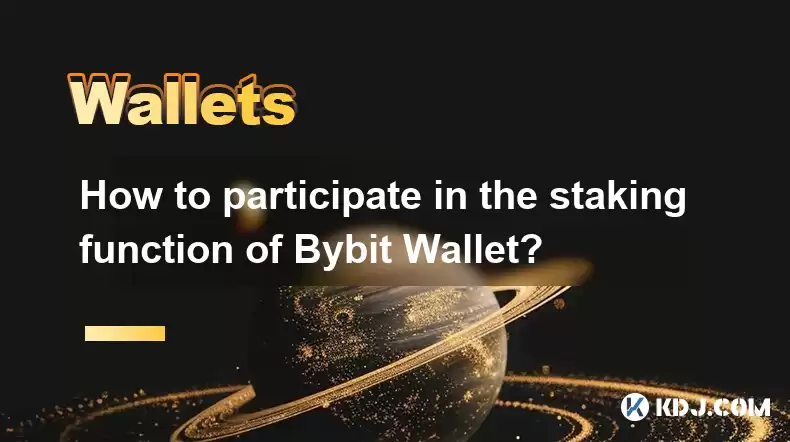
Understanding Bybit Wallet Staking
Bybit Wallet offers a staking function allowing users to lock up their crypto assets in exchange for rewards. This is a passive income strategy, but it’s crucial to understand the risks involved before participating. Rewards vary depending on the asset staked and the staking period. The platform provides details on the Annual Percentage Yield (APY) for each available asset. Remember, APY is not guaranteed and can fluctuate. Always check the current rates before committing your funds.
Step-by-Step Guide to Staking on Bybit Wallet
Before you begin, ensure you have a Bybit Wallet account and have transferred the cryptocurrency you wish to stake into your wallet. The process is generally straightforward but requires careful attention to detail.
Step 1: Access the Staking Section: Log in to your Bybit Wallet and navigate to the "Staking" section. This is usually prominently featured on the main dashboard or within the "Earn" section.
Step 2: Select Your Asset: Choose the cryptocurrency you want to stake from the list of available assets. Each asset will display its current APY and the minimum staking amount.
Step 3: Choose a Staking Plan: Bybit Wallet may offer various staking plans with different lock-up periods and APY. Carefully review each plan's terms and conditions before making a selection. Longer lock-up periods often offer higher APYs, but you'll have less liquidity.
Step 4: Enter the Amount: Enter the amount of cryptocurrency you wish to stake. Ensure it meets the minimum staking requirement for your chosen plan. Double-check the amount before proceeding.
Step 5: Confirm Your Stake: Review all the details of your staking plan, including the asset, amount, lock-up period, and expected rewards. Once you are satisfied, confirm your stake.
Step 6: Monitor Your Stake: After confirming, your staked assets will be locked. You can monitor your staking progress and accrued rewards within the staking section of your wallet.
Step 7: Claim Your Rewards: Once your staking period ends, you can claim your rewards. These rewards will usually be added to your wallet balance. Check the specific instructions for claiming rewards on the Bybit Wallet platform.
Understanding Risks and Rewards
Risk Tolerance is Crucial: While staking offers the potential for passive income, it's essential to understand the inherent risks. Impermanent Loss: This is particularly relevant for liquidity pool staking. If the price of the staked assets changes significantly, you might experience a loss compared to simply holding the assets. Smart Contract Risks: Always research the smart contracts backing the staking program. Vulnerabilities in the contract could lead to loss of funds. Platform Risk: The security and stability of the Bybit Wallet platform itself are also factors to consider. Diversification across different platforms and staking options is advisable. Regulatory Changes: The regulatory landscape for cryptocurrencies is constantly evolving. Changes in regulations could impact your staking rewards or access to your funds.
Different Staking Options on Bybit Wallet
Bybit Wallet may offer various staking options beyond the standard fixed-term staking. These could include flexible staking, which allows you to unstake your assets at any time, though usually with a lower APY. They may also offer various pools with different assets and risk profiles. Always carefully examine the details of each option before committing your funds. Understanding the differences between these options is crucial for optimizing your staking strategy.
Security Measures for Bybit Wallet Staking
Prioritize security when engaging in staking. Use a strong, unique password for your Bybit Wallet account. Enable two-factor authentication (2FA) for added protection. Be wary of phishing scams and only access your wallet through official channels. Regularly review your wallet transactions to detect any unauthorized activity. Never share your private keys or seed phrase with anyone.
Frequently Asked Questions
Q: What cryptocurrencies can I stake on Bybit Wallet?
A: The available cryptocurrencies for staking on Bybit Wallet vary and are subject to change. Check the platform's staking section for the most up-to-date list.
Q: What are the risks associated with staking on Bybit Wallet?
A: Risks include impermanent loss (for liquidity pool staking), smart contract vulnerabilities, platform risk, and regulatory changes. Thorough research is crucial before staking.
Q: How do I claim my staking rewards?
A: The process for claiming rewards is usually detailed within the Bybit Wallet staking section for each specific staking plan. Generally, you will need to unstake your assets to receive your rewards.
Q: What is the minimum amount I can stake?
A: The minimum staking amount varies depending on the chosen cryptocurrency and staking plan. Check the platform for details before staking.
Q: Is my staked cryptocurrency insured?
A: Bybit Wallet may have its own insurance policies, but it's advisable to review their terms and conditions regarding insurance coverage for staked assets. No insurance can completely eliminate all risks.
Q: What happens if Bybit Wallet goes bankrupt?
A: The impact of a Bybit Wallet bankruptcy on your staked assets would depend on the platform's insolvency procedures and the legal jurisdiction involved. This is a significant risk to consider.
Q: How often are staking rewards paid out?
A: The frequency of reward payouts varies depending on the specific staking plan. Some may pay out daily, weekly, or monthly. Check the details of your chosen plan.
Q: Can I unstake my cryptocurrency before the lock-up period ends?
A: This depends on the staking plan. Flexible staking options allow for early unstaking, but usually with a penalty in the form of reduced rewards. Fixed-term staking usually requires waiting until the lock-up period expires.
Q: What is the difference between staking and lending?
A: Staking involves locking up your cryptocurrency to participate in network consensus, while lending involves providing your cryptocurrency to a platform that lends it out to others. Both offer potential rewards, but with different risks and mechanisms.
Q: How do I choose the best staking plan for me?
A: Consider your risk tolerance, the length of time you're willing to lock up your funds, and the desired APY. Compare different plans offered by Bybit Wallet before making a decision.
Disclaimer:info@kdj.com
The information provided is not trading advice. kdj.com does not assume any responsibility for any investments made based on the information provided in this article. Cryptocurrencies are highly volatile and it is highly recommended that you invest with caution after thorough research!
If you believe that the content used on this website infringes your copyright, please contact us immediately (info@kdj.com) and we will delete it promptly.
- Dogecoin, Presale, Surge: Riding the Meme Coin Wave
- 2025-08-12 11:10:12
- Dogecoin, Tron, and the ROI Reality Check: What's a Crypto Investor to Do?
- 2025-08-12 11:15:12
- Ethereum Layer-2 Scaling Competition Heats Up as ETH Breaks $4K
- 2025-08-12 10:30:12
- China Regulation, Stablecoins, and BNB Presale: Navigating the Crypto Landscape
- 2025-08-12 11:30:12
- Meme Coins, Investment, and Token Burns: What's Hot in 2025?
- 2025-08-12 10:30:12
- China's National Security Alarm Bells Ring Over Worldcoin's Iris Scans
- 2025-08-12 11:35:12
Related knowledge
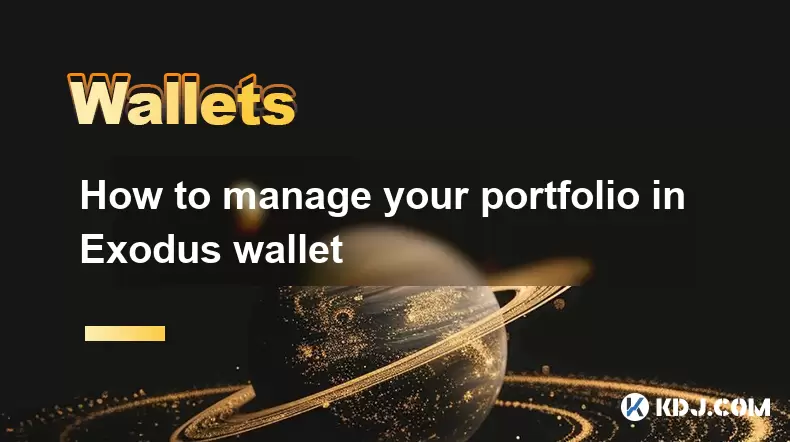
How to manage your portfolio in Exodus wallet
Aug 08,2025 at 10:07pm
Understanding the Exodus Wallet InterfaceThe Exodus wallet is a non-custodial cryptocurrency wallet that supports a wide range of digital assets. When...
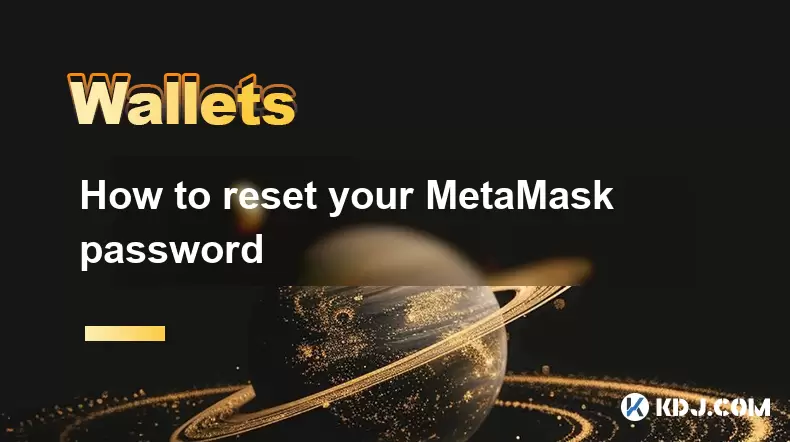
How to reset your MetaMask password
Aug 08,2025 at 01:28pm
Understanding the MetaMask Password Reset ProcessMany users confuse the MetaMask password with the seed phrase or private key, but they serve differen...

How to buy Dogecoin on MetaMask
Aug 08,2025 at 03:42am
Understanding Dogecoin and MetaMask CompatibilityDogecoin (DOGE) is a popular meme-based cryptocurrency that operates on its own blockchain, originall...
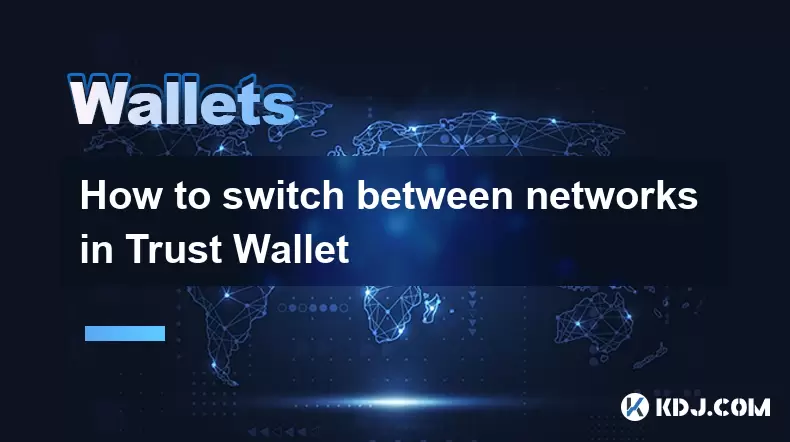
How to switch between networks in Trust Wallet
Aug 09,2025 at 11:07am
Understanding Network Switching in Trust WalletSwitching between networks in Trust Wallet allows users to manage assets across different blockchains, ...
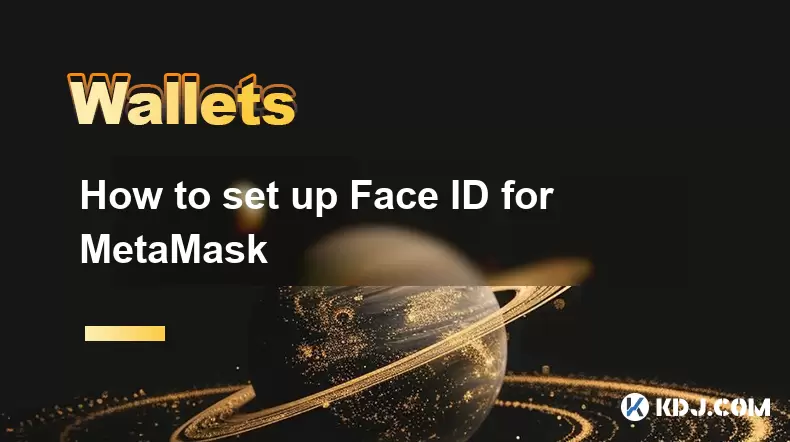
How to set up Face ID for MetaMask
Aug 12,2025 at 02:42am
Understanding Face ID and Its Role in MetaMask SecurityMetaMask is a widely used cryptocurrency wallet that allows users to interact with the Ethereum...
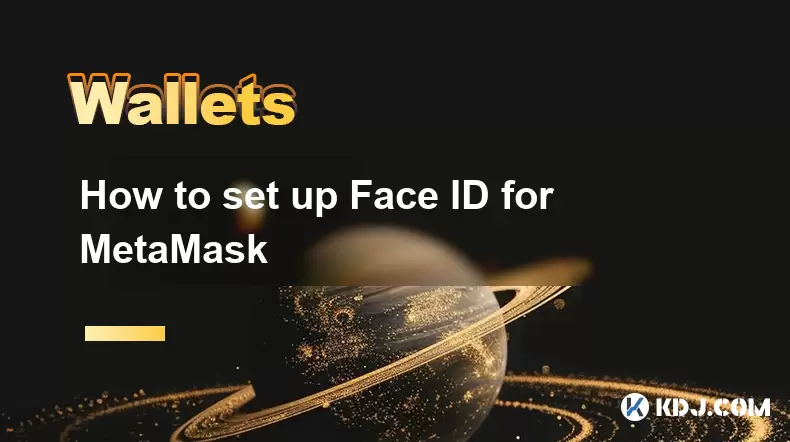
How to set up Face ID for MetaMask
Aug 11,2025 at 09:28am
Understanding Face ID and Its Role in MetaMask SecurityFace ID is a biometric authentication system developed by Apple that uses facial recognition to...

How to manage your portfolio in Exodus wallet
Aug 08,2025 at 10:07pm
Understanding the Exodus Wallet InterfaceThe Exodus wallet is a non-custodial cryptocurrency wallet that supports a wide range of digital assets. When...

How to reset your MetaMask password
Aug 08,2025 at 01:28pm
Understanding the MetaMask Password Reset ProcessMany users confuse the MetaMask password with the seed phrase or private key, but they serve differen...

How to buy Dogecoin on MetaMask
Aug 08,2025 at 03:42am
Understanding Dogecoin and MetaMask CompatibilityDogecoin (DOGE) is a popular meme-based cryptocurrency that operates on its own blockchain, originall...

How to switch between networks in Trust Wallet
Aug 09,2025 at 11:07am
Understanding Network Switching in Trust WalletSwitching between networks in Trust Wallet allows users to manage assets across different blockchains, ...

How to set up Face ID for MetaMask
Aug 12,2025 at 02:42am
Understanding Face ID and Its Role in MetaMask SecurityMetaMask is a widely used cryptocurrency wallet that allows users to interact with the Ethereum...

How to set up Face ID for MetaMask
Aug 11,2025 at 09:28am
Understanding Face ID and Its Role in MetaMask SecurityFace ID is a biometric authentication system developed by Apple that uses facial recognition to...
See all articles

























































































